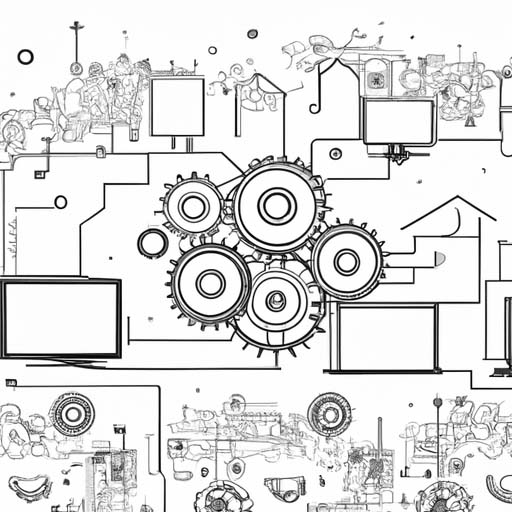Key Elements of the Hyper Automation Market
The global hyper automation market is experiencing significant growth as organizations strive to streamline and optimize their business processes through the integration of intelligent automation technologies. Hyper automation combines artificial intelligence (AI), machine learning (ML), robotic process automation (RPA), and other advanced technologies to automate complex workflows. Key factors driving market expansion include:
- Increasing need for process efficiency and cost reduction
- Scalability and adaptability to changing business needs
- Demand for intelligent decision-making capabilities
Hyper automation offers organizations the ability to automate end-to-end processes, including data entry, document processing, and customer service, resulting in significant improvements in process efficiency, accuracy, and speed. The scalability of hyper automation solutions allows organizations to handle higher volumes of work without compromising quality or speed. Additionally, hyper automation leverages AI and ML algorithms to analyze large volumes of data and make intelligent decisions in real-time, improving decision accuracy and overall business outcomes.
The hyper automation market also presents growth potential opportunities, such as the integration of hyper automation with emerging technologies like Internet of Things (IoT) and edge computing. This combination enables organizations to automate and optimize processes involving physical devices, sensors, and data. For example, hyper automation in manufacturing can facilitate predictive maintenance by automating the collection and analysis of sensor data to proactively identify equipment failure patterns. The integration of hyper automation with IoT and edge computing opens up new possibilities for efficient automation in industries like manufacturing, logistics, and healthcare.
Another growth opportunity lies in the adoption of hyper automation in the cybersecurity domain. As organizations face increasingly sophisticated cyber threats, hyper automation can play a crucial role in strengthening security measures. By automating security monitoring, threat detection, and incident response processes, hyper automation enables organizations to detect and respond to security incidents in real-time, reducing the risk of data breaches. The integration of AI and ML algorithms enhances threat intelligence and supports advanced security analytics, enhancing organizations’ resilience and responsiveness to evolving threats.
Key trends in the hyper automation market include the integration of hyper automation with low-code development platforms, the adoption of hyper automation in customer experience management, and the focus on explainable AI and ethical considerations. The integration with low-code development platforms allows organizations to accelerate the development and deployment of automated processes by enabling business users to create and modify automation workflows without extensive coding knowledge. Adoption in customer experience management aims to enhance customer interactions and deliver personalized experiences by automating customer data analysis and sentiment analysis. Furthermore, the focus on explainable AI and ethical considerations ensures transparency, accountability, fairness, and privacy in the use of automation technologies.
Overall, the hyper automation market presents significant opportunities for organizations to improve process efficiency, scalability, decision-making capabilities, and cybersecurity measures through the integration of intelligent automation technologies.
